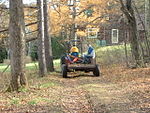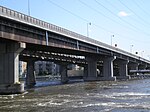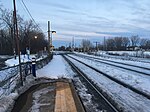Senneville, Quebec

Senneville (French pronunciation: [sɛnvil]) is an affluent on-island suburban village on the western tip of the Island of Montreal, Quebec, Canada. It is the wealthiest town in the West Island.Situated close to the city of Montreal, it was historically a popular location for the country houses of wealthy Montrealers. Attractions include multiple golf clubs, a yacht club, and La Ferme du Fort Senneville, an organic demonstration farm. The Morgan Arboretum was founded here in 1953, and is today managed by Macdonald College; an important bird sanctuary, it is open to the public year-round. Fort Senneville was constructed here in 1671, but its ruins are on private land and are not accessible to the public. The historic core of the village was designated a National Historic Site of Canada in 2002.
Excerpt from the Wikipedia article Senneville, Quebec (License: CC BY-SA 3.0, Authors, Images).Senneville, Quebec
Boulevard des Anciens-Combattants,
Geographical coordinates (GPS) Address Nearby Places Show on map
Geographical coordinates (GPS)
| Latitude | Longitude |
|---|---|
| N 45.416666666667 ° | E -73.95 ° |
Address
Boulevard des Anciens-Combattants
Boulevard des Anciens-Combattants
H9X 3V9
Quebec, Canada
Open on Google Maps







